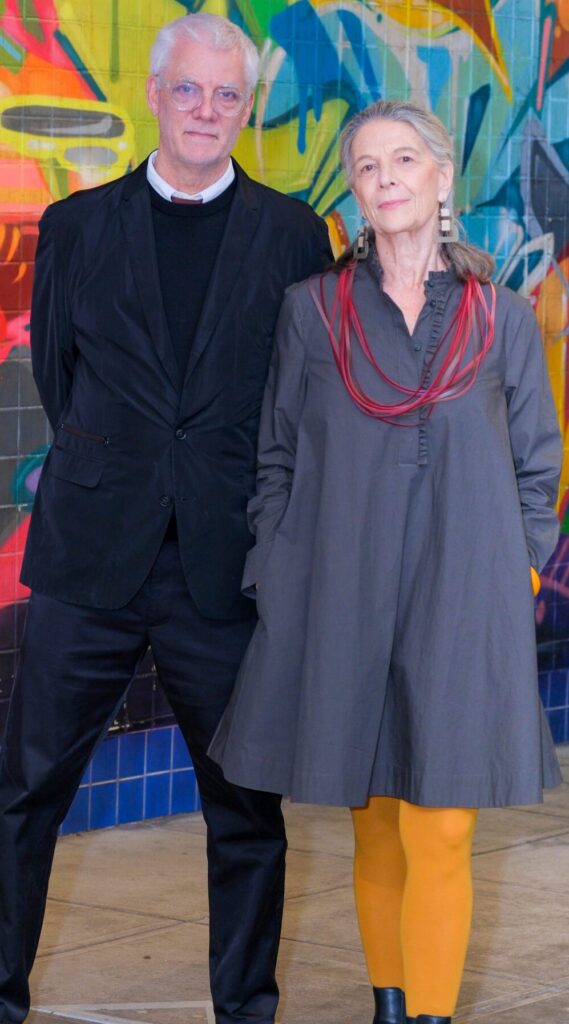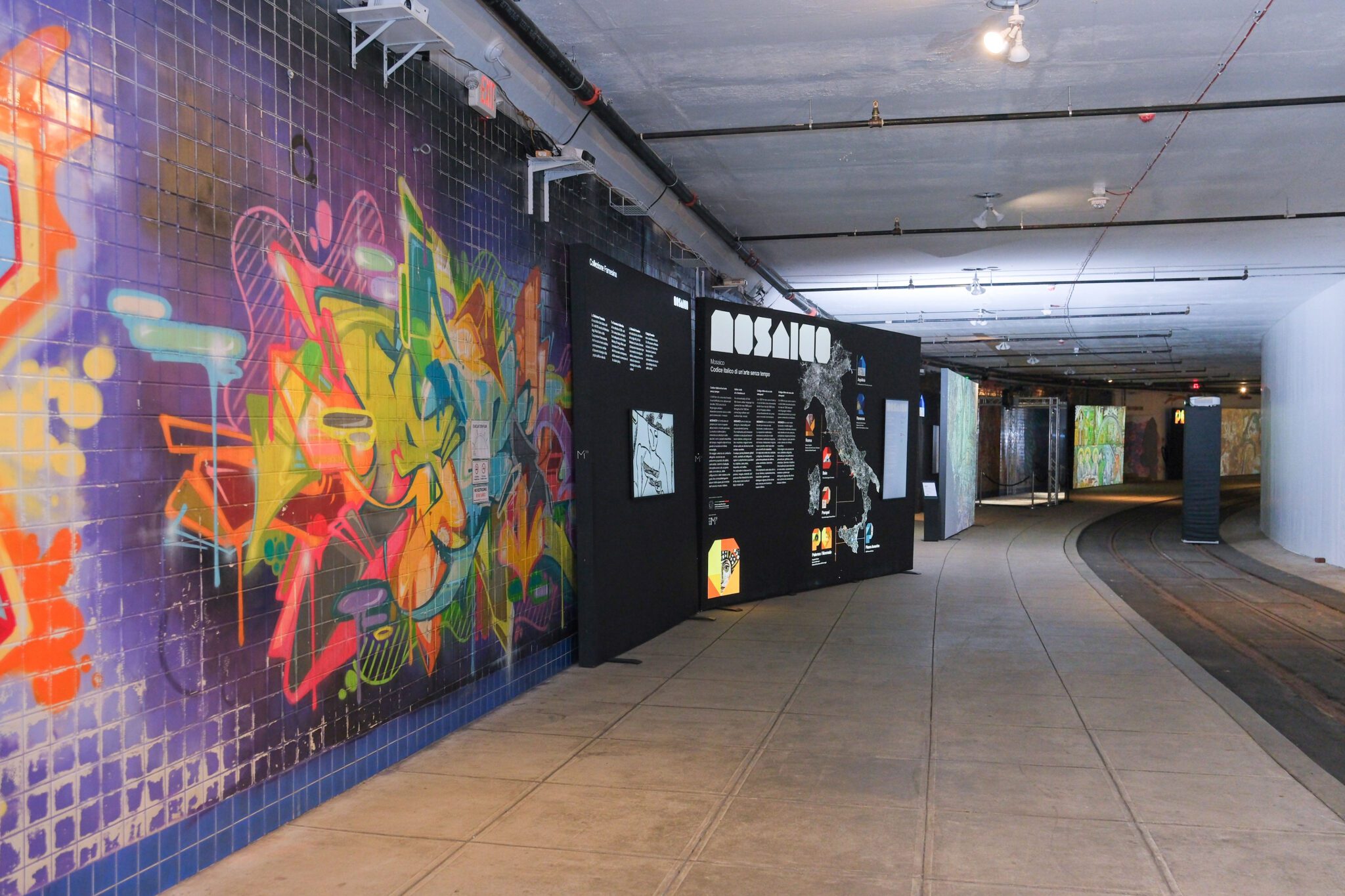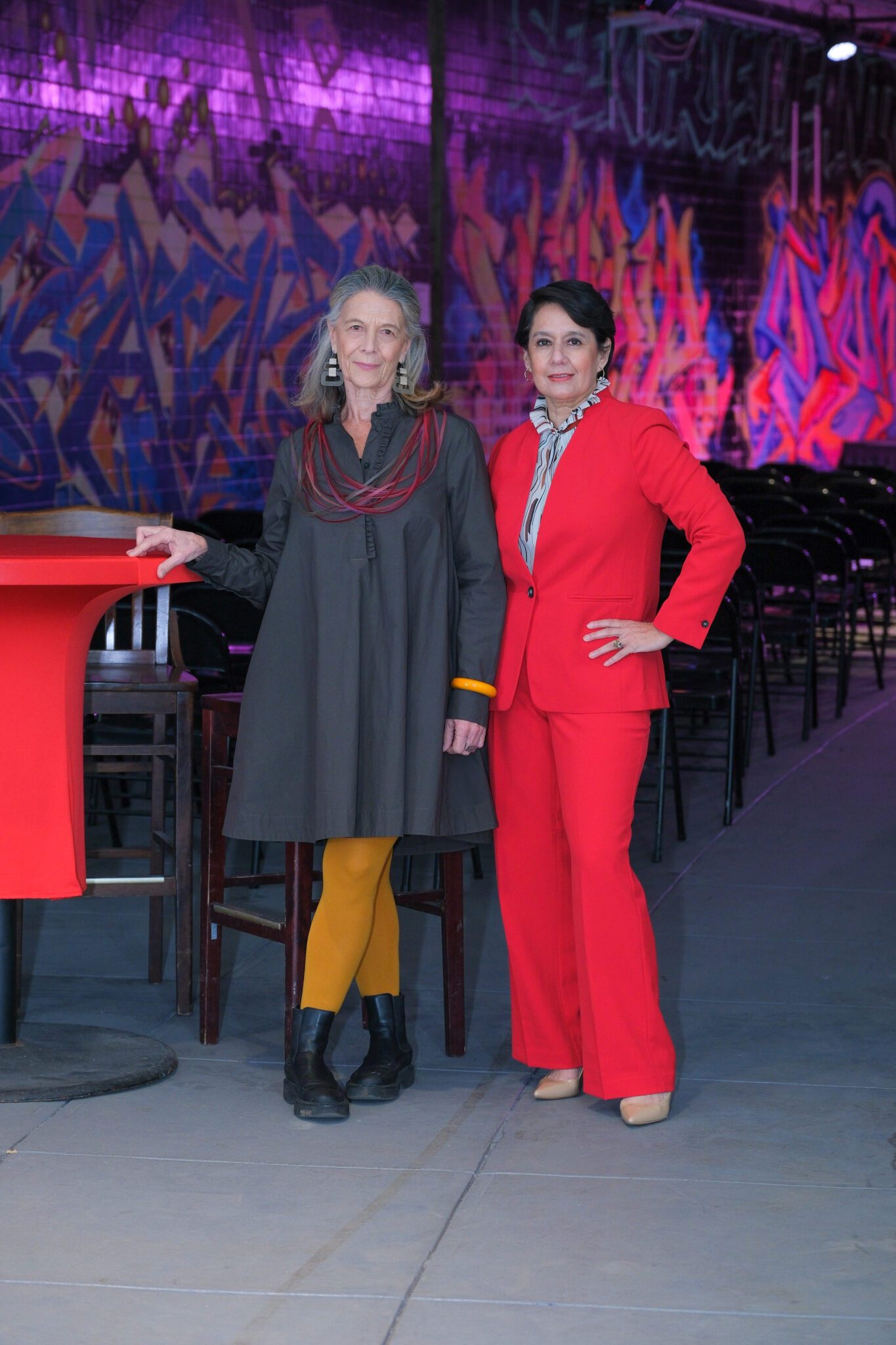Notes from The Underground—Dupont, That Is
By • December 11, 2024 0 1868

“We are both architects,” says Lucrecia Laudi, who co-founded Dupont Underground in 2005 with her husband, Julian Hunt. “But we come from different worlds.”
Laudi grew up in the Argentine Pampas. There, she explains, the only thing you see is the horizon. “You sit under the tree, and you dream.”
Upon receiving her architecture diploma in Argentina, she traveled the world. A master’s degree in architecture and city planning from the University of Pennsylvania came later.
Hunt’s first American ancestor, an indentured servant, arrived in New Haven Colony in the 17th century. His architecture alma maters: the University of Virginia and Rice University, with European travel in between.
Having met in Spain, where Hunt was working for Ricardo Bofill’s Taller de Arquitectura, the two found they shared a fascination with reclaiming public space, the focus of both their master’s projects (hers, the Arsenal in Venice; his, an Arabic garden in Valencia).
After years working in Barcelona, during its physical transformation prior to the 1992 Olympic Games, then for large U.S. firms with international clients, in 2005 the couple launched Hunt Laudi Studio in Washington, D.C.
An unexpected opportunity awaited within walking distance.
That’s Not a Shaft
Just what were those boarded-up structures around Dupont Circle’s perimeter? Some said air shafts for the Red Line. “That’s not a shaft,” Hunt thought to himself, examining one. “I’m an architect. I can tell the difference.”
In fact, they were staircases leading to a subterranean streetcar station, abandoned in 1961. Later uses: a fallout shelter and a food court that failed. “We instantly understood that it was a public space,” says Hunt. One of their inspirations, New York’s High Line, had yet to break ground.
2025 will be the 20th anniversary of the founding of the Arts Coalition for the Dupont Underground. But it took nine years to secure a lease for the space and two more before it opened to the public, on April 30, 2016, with a smash hit.
Constructed by more than 1,400 volunteers, “Re-ball: Raise/Raze,” a competition-winning proposal by design studio Hou de Sousa, repurposed 650,000 translucent plastic balls from “The Beach,” Snarkitecture’s summer installation at the National Building Museum, as a playful interactive environment.
Did You Miss the Centennial?
Constructed in the 1870s, Pacific Circle was renamed for Rear Adm. Samuel Francis du Pont (1803-1865) in 1882. Several mansions from those Gilded Age decades survive. The central fountain, commissioned by du Pont family members from Lincoln Memorial designers Henry Bacon and Daniel Chester French, was installed in 1920. Did you miss the centennial of their marble masterpiece, held in May of 2021?
An essential site in District history — notably, but not only, that of the LGBTQ community — the park and its surrounding neighborhood remain one of the city’s liveliest hubs. The year-round Sunday farmers market, established in 1997, is D.C.’s largest. Launched this year on 19th Street NW, adjacent to the Dupont Underground entrance, the DC Holiday Market at Dupont Circle (the former Downtown Holiday Market) runs through Monday, Dec. 23.
Several nonprofits are active in the neighborhood. The Dupont Circle Business Improvement District, formed in 2018 and funded by commercial property owners within a 22-block zone, contributes to the area’s cleanliness, safety, outreach to the unhoused and infrastructure, also running events such as the First Friday ArtWalk.
Established in the early 2000s, Historic Dupont Circle Main Streets, like other D.C. Main Streets, is largely funded by the District Department of Small and Local Business Development.
The current members of the Dupont-Kalorama Museums Consortium, which dates to 1983, are Anderson House/Society of the Cincinnati, Dumbarton House, the National Museum of American Jewish Military History, O Museum in the Mansion, the Phillips Collection and the President Woodrow Wilson House. And, of course, Dupont Underground. Save the Date: Next year’s Museum Walk Weekend will take place on June 21 and 22.
A Dual Role: Local and Worldwide
Dupont Underground has a dual role: local and worldwide. One of the most visible programs over the years was the World Press Photo Exhibition held at the end of 2017 and 2019, displaying the cream of international photojournalism.
Always looking for the local community angle, in October of 2020, Dupont Underground organized an exhibition of photos by participants in Black Lives Matter demonstrations in the District opened; it was extended several times.
Embassy Row is a nearby source of international programming. Now on view through Jan. 26 is “Mosaico: Italian Code of a Timeless Art,” an immersive multimedia exhibition sponsored by the Embassy of Italy, the Italian Cultural Institute of Washington and the Italian Ministry of Foreign Affairs and International Cooperation (see separate story in this issue). The show’s seven stations focus on mosaics in Aquileia, Baiae, Pompeii, Ravenna, Rome and, in Sicily, Palermo/Monreale and Piazza Armerina.
Other joint projects have been undertaken with the Embassies of Spain and Sweden. Coming in 2025: Argentina, Denmark, Peru and Uruguay.

The Dupont Underground. Photo by Greg “Fritz” Blakey.
On the local side, last March, during Women’s History Month, Dupont Underground hosted its second annual exhibition of art by women. Soon after came an exhibition of artwork by Iranian American gynecologist S. Abbas Shobeiri titled: “Do You See Me? Paintings of Postpartum Trauma and Healing.”
Exhibitions in 2023 included: “The Cost of Living: An Observation of the Resistance, Resilience and Joy of the Black Woman” and “The Ground We Stand On: Past and Present DC LBGTQ Change-makers.”
Next March will see “The District of Columbia and the Democratic Quality of Public Space.” A Black Art Foundation exhibition is to follow in April.
Several D.C.-based performing arts groups have taken advantage of the one-of-a-kind space, which contains a 200-seat theater. A key goal for the organization is “to create the conditions for the emergence of talent.”
The Washington Ballet’s Studio Company returned to Dupont Underground for four “Dance For All” performances last October and will be back for the third time next fall. Other “regulars”: In Series will present “Poppea” in March, Chamber Dance Project will perform in June and Picnic Theatre Company, which presented “Valley of the Dolls … and Beyond!” last month, is also due to return in 2025. Classical music presenter Counterpoint will close out its first season at Dupont Underground on May 16.
The next Drag Underground, co-presented monthly with the Washington Blade, will take place on Dec. 13 from 8 to 9:30 p.m.; and a Christmas Milonga — a social gathering celebrating tango and other aspects of Argentine culture — is scheduled for Dec. 17 from 8:15 a.m. to 10:30 p.m.
Speaking at The Georgetowner’s April 25 Cultural Leadership Breakfast, CEO Ana Harvey boasted that, despite only being open on Fridays, Saturdays and Sundays, September through December and March through June, Dupont Underground attracts about 25,000 annual visitors.

Laudi and Ana Harvey, CEO of Dupont Underground. Photo by Greg “Fritz” Blakey.
At the April breakfast, Harvey told of putting her hands under a spigot and joyfully announcing: “We have water!” That meant that “Bathrooms are coming,” she said. Construction is scheduled to begin this year.
Future investment in staff, equipment and programming will require Dupont Underground to “strategically expand its board and focus on significant fundraising efforts.”

